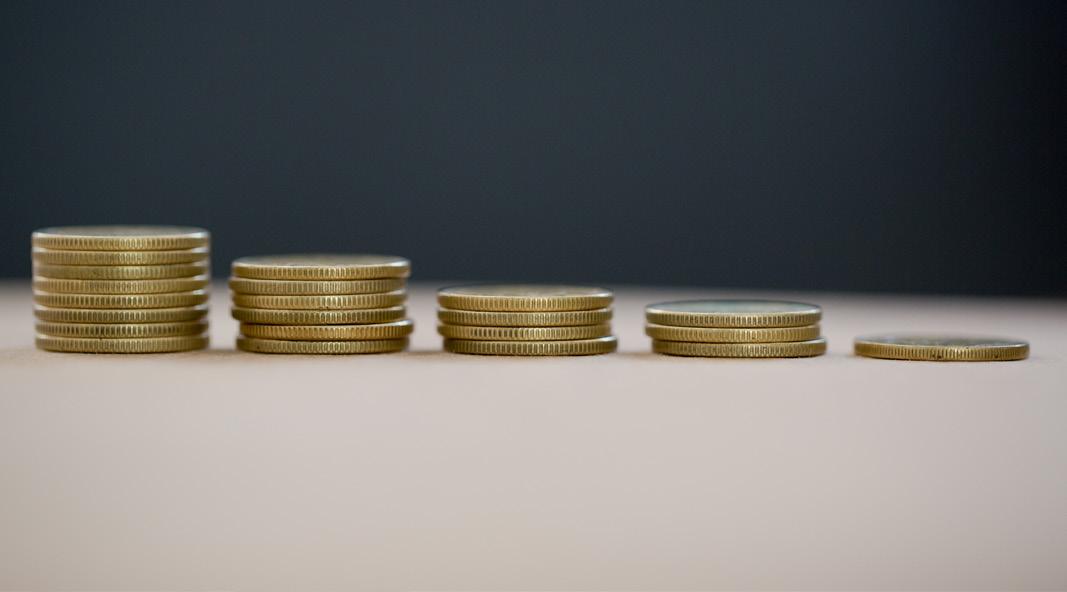
3 minute read
CELEBRATING 30 YEARS OF INDEPENDENCE
from FlyWestair May 2020
MO MONEY MO NAMIBIA
Since the flag of Imperial Germany was raised on Namibian soil in 1884, the country not only had two colonial masters but also a number of different currencies before the Namibia Dollar was introduced in 1993.
When Germany proclaimed its newly acquired colony of German South West Africa in 1884, the German South-West African mark became the legal tender. After the colony’s capitulation to the Union Defence Force in 1915 South Africa took over administration of the country and issued a temporary currency – the South West African mark. It was used from 1916 until 1918 when it was replaced by the South African pound. In addition to the South African pound, a South West African pound was issued between the 1930s and 1959. During 1961, the year when South Africa became a republic, the South African Rand was introduced and replaced all currencies in circulation in Namibia and South Africa.
Finally, in 1993, Namibia adopted its own currency, the Namibia dollar. Alternative names for the currency were suggested, including the Namibian kalahar, in reference to the Kalahari Desert, but the government eventually opted for the Namibia dollar. The first notes were issued on 15 September 1993. Banknotes worth N$ 100 million in total were distributed to Namibia’s commercial banks. Altogether, banknotes and coins worth N$ 2 billion were produced at a cost of N$18 million. The new coins arrived at Walvis Bay on 13 November that year and were issued to commercial banks from 8 December.
Namibia now had its own currency, but because of the small size of the country’s economy, it was decided to keep the dollar pegged to the South African Rand. This means the rand is still legal tender in Namibia and has the same value. Conversely, however, the Namibia dollar is not accepted for cash payment in South Africa.
Considering that more than 60% of Namibian imports are from South Africa, being pegged to the rand does have advantages such as price stability. Furthermore, the rand acts as a shock absorber to the Namibian economy: due to the buffer effect of the significantly larger South African economy, major changes in the global market are not felt as hard because the Common Monetary Area links the Namibia dollar to the rand.
The members of the Common Monetary Area (CMA) are Namibia, South Africa, Lesotho and Eswatini (formerly Swaziland). The monetary union is allied to the South African Customs Union, with the purpose that all countries can have the same development and equitable economic advance.
The designs on Namibia’s banknotes and coins depict the country’s natural beauty and landmarks. The 200, 100 and 50 dollar banknotes honour Hendrik Witbooi, one of the first local leaders to take up arms against the German authorities in the late 1800s and in the colonial war of 1904/05, while the 10 and 20 dollar banknotes portray the founding president, Sam Nujoma. The back of the banknotes and coins celebrate the country’s fauna and flora.
As part of the 30 th independence celebrations, the Bank of Namibia issued a N$30 note that depicts the faces of founding president Sam Nujoma, former president Hifikepunye Pohamba and President Hage Geingob. The note is meant to celebrate the smooth transition of power as well as the legacy of the three presidents over the last three decades.
After 109 years of currencies forced upon them by colonial masters, Namibians were finally free to introduce their own unique currency. Another proud achievement worth celebrating.
Le Roux van Schalkwyk










